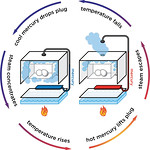Designing Agentive Technology

AI That Works for People
Advances in narrow artificial intelligence make possible agentive systems that do things directly for their users (like, say, an automatic pet feeder). They deliver on the promise of user-centered design, but present fresh challenges in understanding their unique promises and pitfalls. Designing Agentive Technology provides both a conceptual grounding and practical advice to unlock agentive technology’s massive potential.
Advances in narrow artificial intelligence make possible agentive systems that do things directly for their users (like, say, an automatic pet feeder). They deliver on the promise of user-centered design, but present fresh challenges in understanding their unique promises and pitfalls. Designing Agentive Technology provides both a conceptual grounding and practical advice to unlock agentive technology’s massive potential.
Testimonials
Noessel’s book cuts through the AI hype to give practical advice and valuable context on how to apply today’s powerful-but-limited AI technology to create useful, helpful, supportive, and valuable services that go way beyond silly chatbots.
Mike Kuniavsky, Xerox PARC
A fun, friendly, and accessible guide on how to design for an emerging world where software-enabled machines become intelligent servants, laced with sci-if wonder and moral dilemmas.
Dave Gray, founder of XPLANE, author of Liminal Thinking, Gamestorming, and The Connected Company
Engaging and accessible—Designing Agentive Technology takes on one of the most relevant topics of this era by making it fun and understandable.
Adam Cutler, distinguished designer for Cognitive Computing, IBM
This book taps us on the shoulder and asks us to look up and realize that the world around us has changed. It’s time for us to design ‘narrow’ AI to start making things that work for users.
Nir Eyal, author of Hooked: How to Build Habit-Forming Products
There’s a lot of pie-in-the-sky speculation about AI. On the other hand, Designing Agentive Technology makes a corner of the AI universe accessible in this straightforward and fun-to-read book.
Molly Wright Steenson, associate professor, Carnegie Mellon School of Design
This book is an ideal entry point for professionals considering the design and implications of AI, and for anyone who wishes to understand the important new space between automation and manual control.
Amber Case, author of Calm Technology
AI isn’t just technology—it’s how we interact and experience it. Chris Noessel gives a fantastic framework that opens the field so that more diverse voices can collectively design our future.
David Young, designing.ai and inventinginteractive.com
Table of Contents
Foreword by Phil Gilbert
Chapter 1: The Thermostat That Evolved
Chapter 2: Fait Accompli: Agentive Tech Is Here
Chapter 3: Agentive Tech Can Change the World
Chapter 4: Six Takeaways from the History of Agentive Thinking
Chapter 5: A Modifed Frame for Interaction
Chapter 6: Ramping Up with an Agent
Chapter 7: Everything Running Smoothly
Chapter 8: Handling Exceptions
Chapter 9: Handoff and Takeback
Chapter 10: Evaluating Agents
Chapter 11: How Will Our Practice Evolve?
Chapter 12: Utopia, Dystopia, and Cat Videos
Chapter 13: Your Mission, Should You Choose to Accept It
FAQ
These common questions and their short answers are taken from Christopher Noessel’s book Designing Agentive Technology: AI That Works for People. You can find longer answers to each in your copy of the book, either printed or digital version.
- How do you pronounce “agentive”?
“Agentive” is a once-languishing adjective that is built on the word “agent,” so I pronounce it emphasizing the first syllable, “A-jen-tiv.” I like that this pronunciation points back to its root, which helps people suss out its meaning when they’re hearing it for the first time. I’ve heard people stress the second syllable, as “uh-JEN-tiv,” which rolls off the tongue just fine, but doesn’t do much to help people’s understanding.













